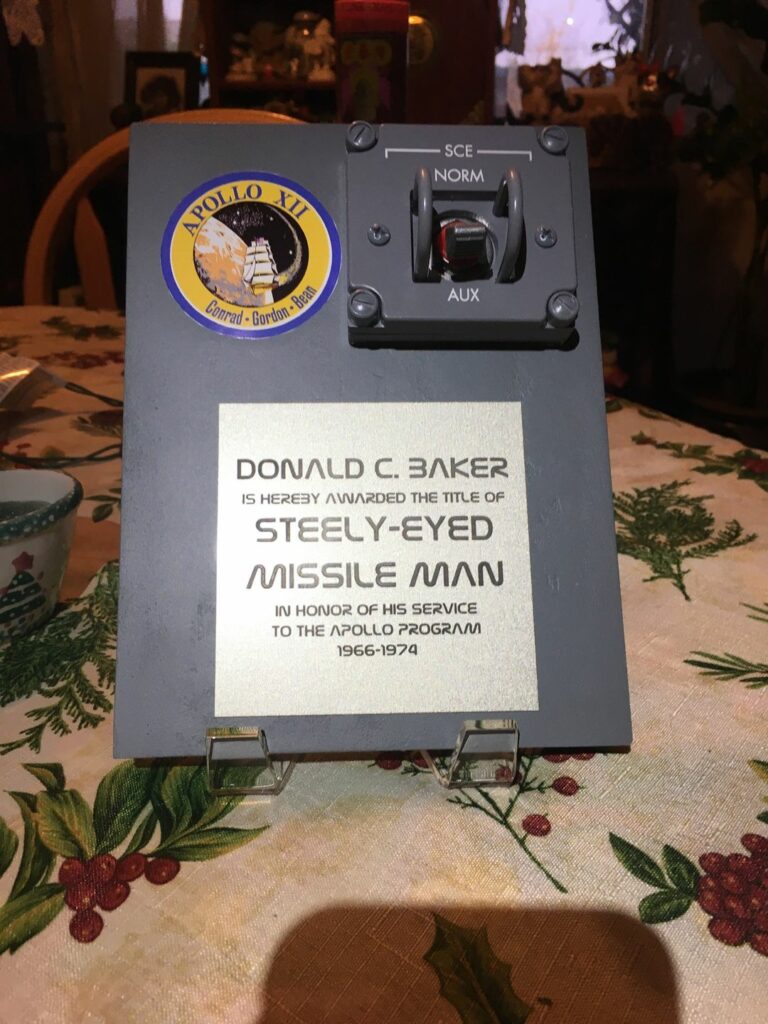November 12, 1969. The Apollo 12 mission launched that morning. As the rocket cleared the launch tower, responsibility for the mission transferred from Launch Control in Cape Canaveral to Mission Control in Houston. Thirty-four seconds into the launch, the rocket was struck by lightning. Suddenly all the instruments on the capsule control panel went crazy. Ground telemetry was garbled. It was struck again at 52 seconds, and every alarm light on the console was flashing. The rocket maintained its launch path but no one in the capsule or on the ground other than the ground based radar could tell what was going on.
If instrumentation and telemetry could not be restored, the launch would have to be aborted.
The astronauts and ground controllers scrambled to understand what had happened. The engineer on the EECOM station that morning was John W. Aaron, and it was his job to be intimately familiar with the power systems of the command and service modules of the Apollo craft. In previous simulations he had seen something similar. He quickly called out: “CAPCOM, EECOM – Try SCE to AUX,” telling the Capsule communicator, the man whose job it was to handle all communication between the spacecraft and mission control, to tell the pilot to flip a switch. No one else in the room knew what that switch was.
“FCE to AUX?”
“No, S, SCE to AUX.”
The recommendation was relayed to Apollo 12 thirty-six seconds after they lost their instruments. Neither Commander Pete Conrad nor Command Module Pilot Richard Gordon recognized the reference to “SCE,” but Lunar Module pilot Alan Bean did, and knew where the switch was. SCE stood for Signal Conditioning Electronics, the electronics that converted all the signals from the various sensors and equipment to voltages or currents that could be easily displayed or transmitted to the ground, and John Aaron had told them to switch their power supply to the auxiliary power source. Alan Bean found and flipped the switch, and all the instruments and ground telemetry came back to life.
There were still many minutes of resetting circuit breakers and clearing faults, but the mission was saved. For his knowledge, quick thinking and grace under pressure, John W. Aaron was named a Steely-Eyed Missile Man that day.
The rocket stayed on course even after the lightning strikes because the guidance computer, located in the body of the Saturn V, stayed functional. My father worked on the Instrument Unit – the Saturn V guidance system – for IBM at Cape Canaveral. This Christmas I gave him this:

Bravo, Kevin.
An excellent thing to do for your dad. I hope you were able to give it to him in person.
My uncle worked on the circuitry in Mercury, Gemini and I think Apollo, they were a very different breed back then having learned their craft in WWII and Korea. That was an excellent thing to do Kevin.
Nicely done.
My father was the IBM chief systems engineer for the Houston Mission Control computer upgrade from 1964-1966, I presume to enable the capabilities to go from Gemini missions to Apollo missions. And yes, learned his craft in Korea.
I think he would approve.
Very cool. Salutes to him for his service, and Merry Christmas to you and yours.
My dad did the whole Range Tracking and Instrumentation Ships thingy along with other things. His plaque from NASA and his Apollo 11 coins are still at my brother’s house.
Dangit Kevin. How did all this dust get in my eyes?
Well done, sir!
We were once a serious people, a nation of, by and for steely eyed missile men.
The difference I think is that the clowns among us were shown to the playroom, and generally barred from access to levers of power and serious consideration.
And FYI, that is an awesome gift for your dad.
Well done! VERY well done!